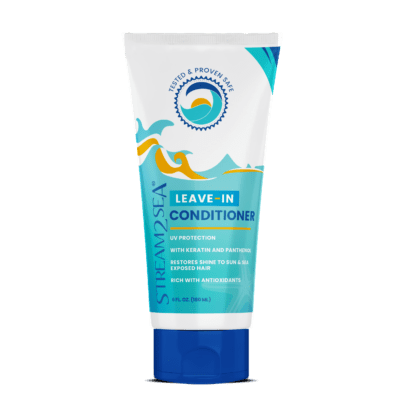At Stream2Sea, we are all about protecting everything within our precious waters: marine life, our bodies, and the ecosystems found within rivers and lakes. We’re also standing up to protect municipal drinking water. If you live in a city, you likely drink from municipal water.
Did you know that estrogen and other chemicals and medications can be lingering in your drinking water? Estrogen can be found in 80% of American rivers and even in bottled water. As you gulp down that tall glass of water you could be ingesting dozens of medication and body care remnants that people have flushed down the toilet. These pharmaceuticals can pollute our water and unintentionally expose us to the chemicals in these medications and products.
Some medications, such as hormones and antidepressants, include endocrine-disrupting compounds, which interfere with the reproduction and normal growth of many aquatic species, such as frogs and fish. It has been discovered that many male fish now produce both male and female reproductive parts.
This is happening because of the excess hormones from our medications being flushed into our rivers and lakes. It’s also happening because of harmful ingredients in our sunscreens and body care products—some of which are not even on the label.
SPF, being considered an over-the-counter drug, is required to list all of its ingredients on the label, so you as a consumer can check whether your sunscreen includes any endocrine-disrupting chemicals like octinoxate. Body care products like body wash, shampoo, and conditioner are not required to be labeled in the same way—chemicals can be hidden under the term “fragrance”. Many of those which are commonly left in the product but kept off the label are the same dangerous chemicals typically found in sunscreen, most of which pass right through wastewater treatment plants after they are washed down the drain.
Equally concerning is the presence of oxybenzone in municipal drinking water. Oxybenzone, itself a known endocrine disruptor affecting the estrogen in our bodies, enters the water system through unsafe sunscreen and other body care products, and is also not removed in the treatment process. Even if you’re not right near the ocean, your sunscreen use affects the water, as it may enter the ocean or other parts of the water cycle—and then, eventually, the ocean—through the wastewater system.
Fish are changing their body parts and bodily tissues because of these chemicals! Do you see why this is concerning? The fish live in that water, and we drink that water.
There are several factors that contribute to our polluted drinking water.
Why is There Estrogen in Our Drinking Water?
- Medications flushed down the toilet
- Industrial farmed meat and dairy
- Plastics: Recognize the term BPA? That’s an endocrine disruptor, just like oxybenzone and octinoxate found in sunscreen. BPA is in styrofoam, single-use plastics, and linings of canned goods.
- All artificial scents and fragrances.
- Parabens and other chemicals in personal products, detergents, and cosmetics.
- Pesticides, herbicides, paints, solvents and car exhaust.
If you ingest excess estrogen, you could experience a range of symptoms including dry skin, fertility issues, insomnia, endocrine disruption, and weight gain.
What About Water Treatment Plants?
When medications and body care products are flushed down a toilet or drain, they enter the wastewater treatment system, which cleans up the water. Unfortunately, many of these treatment systems are not designed to remove medications or body care chemicals. You may assume that water treatment plants check your drinking water for hormones and other harmful medicines — but they don’t.
What You Can Do
- Never flush leftover medications!
- Properly dispose of medications at your local “drug take back program” or hazardous waste management facility.
- Focus on hormone-free meat; organic and grass-fed is the best choice.
- Eat organic vegetables whenever possible.
- Read your personal product labels to watch for parabens and harmful chemicals — they’re everywhere. Seek out natural alternatives, and switch out your old, harmful stuff safely — do not flush them down the toilet. Use Stream2Sea sunscreen body care products whenever possible.
- Watch for water filters that get at least some of the hormones out, or try reverse osmosis.
- Contact your local government official or your local waste-water treatment plant to voice your concerns.
This is not just about protecting the fish and other life found within our waterways — it’s about protecting our own health too. Our municipal drinking water is damaged. We need to change this and better systems need to be in place.
Take the Safe Sunscreen Pledge!
Take the Safe Sunscreen Pledge and we’ll send you a digital 20-page resource that dives into ingredients to know, ingredients to avoid, what “organic” and “biodegradable” really mean, and what is truly “reef-safe.”
Thank you for being part of a global movement to protect marine and other ecosystems from unsafe ingredients! What we put on our bodies DOES make a difference, and your positive choices help protect the planet!
